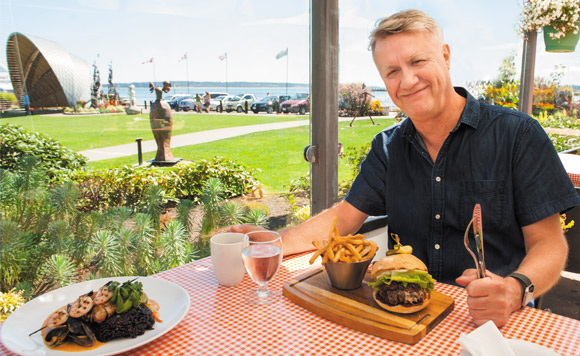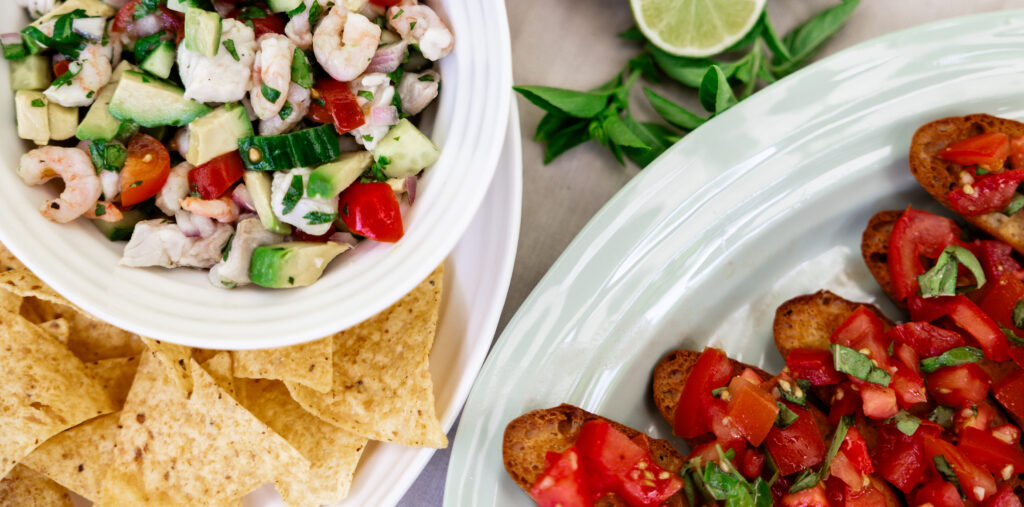You founded EAT Magazine 18 years ago. Give us a glimpse of how you got started in this business and how EAT Magazine came together.
I’ve always been a magazine junkie. I would buy every food magazine I could get my hands on, including obscure international ones. Working as a chef and having access to stories about food and recipes from other cultures was a big draw, but I could never find magazines about our local food scene. Back then no one talked about local food – now, of course, everyone does. Food is in every lifestyle magazine, TV news show, and all over the web and social media.
After taking a photojournalism course, I bought a professional camera and began to tell stories about food instead of cooking professionally. I started writing a column about B.C. wine for a start-up magazine called P.I.G. They barely lasted a year, and offered to sell me the magazine for $1 and all their debts. I thought: why not? Here’s my chance. EAT was born. I went to everyone I knew in the food industry – including Paul Hadfield at Spinnakers and Sinclair Philips of Sooke Harbour House – and asked if they would support a local food magazine. They all said yes. Those first years were tough; I worked out of an unfinished basement in my house. I did everything – the writing, photography, design and production, selling advertising … I was even the paperboy, loading up my car and dropping the magazines off to all the pick-up points. I have to thank my family for their sacrifices and support.
You grew up in Montreal and spent quite a bit of time in the Maritimes before heading out West. What made you decide to finally reside in Victoria?
After getting married in Toronto, I moved to the small lobster fishing village of Shelburne in Nova Scotia with my wife, Cynthia. We had seven great years running a country inn and restaurant until my wife broke her back in a tobogganing accident and we sold the business. As the restaurant chef, I had been struggling to find fresh, locally-grown food to cook with: the season was so short, and there weren’t many farmers in our area. In the offseason, I would take “food” vacations to the West Coast, and fell in love with the weather and the year-round growing season. I knew that something was happening there and that it was at the forefront of the nascent farm-to-table movement. Victoria was becoming a lot more than a synthetic little bit of Britain with its deep fried foods, and I wanted to be part of it. So, we packed up and moved to Victoria. It had it all – a small city where you could get just about everything, a year-round climate, a great place to raise a family, and a developing food culture scene that was new and exciting.
We had the chance to share a few dishes at Haro’s Restaurant & Bar, including the Seafood Curry, Haro’s Burger and the Waldorf Salad. Are these the types of dishes you’d usually seek out? What do you think defines dining on the Peninsula compared with dining in Victoria?
I’m not a food prude: I like to eat almost everything. I’m just as happy eating a big, loaded burger as I am a northern-style Thai curry or a fresh, market vegetable salad. Sidney and Victoria aren’t all that much different, except perhaps for the number of restaurants. Both Victoria and Sidney cook out of the same local food basket. We’re both close to Saanich farms and wineries. We share the same craft beers and many of the same grocers. We might be a bit different demographically, but we have similar food cultures. What I like best about Sidney is the friendly, small-town vibe. Everywhere I go, it feels relaxed and unhurried.
With so many years in the publishing industry, what dramatic changes have you seen and what is your secret to success?
I came to publishing at the beginning of the desktop publishing revolution, which allowed me to do what I do. It was the start of the democratization of publishing, and this process has only accelerated to the point that everyone can have their say on blogs and social media. Although statistically print is still dominant, online is catching up fast, and publishers are looking for ways to be a part of this new reality. But some things are timeless. To stay in business and do well, it’s always about customer service. Add to that a continuing curiosity, a drive to improve, and the building of strong relationships. I’ve also been very fortunate to live in an area that prides itself on supporting local businesses and is a big food town.
You’ve recently published a beautifully illustrated book, called The Eat Journal, following inspiration from magazines and journals in Europe and America. Tell us a bit about this hybrid cookbook/magazine, or mook, magbook or bookazine as you refer to it.
There’s been a huge resurgence of interest in independent magazines in Europe. Publishers and editors are putting a lot of creativity into design and journalists are telling more in-depth stories – maybe it’s a reaction to the web with its endless cat stories and homogenous design. Maybe it’s because people want something more tactile that they can hold and feel. Whatever the reason, readers are re-discovering print. The EAT Journal is my attempt to do something different. I wanted to produce something not only beautiful to look at, but that had compelling, enduring content without the emphasis on news and what’s new. I call it a journal because it’s neither a magazine nor a book but it has elements of both. There are recipes as in a cookbook; there are both long and short articles like a magazine and a few curated advertisements.
(In Sidney you can buy The EAT Journal at Tanner’s Books.)
Is it difficult to keep on top of all the trends in food with so many restaurants in Greater Victoria? Tell us your current favourite, unless it’s a secret!
It’s true that these days there seems to be as many trends as there are restaurants. Right now my favourite is the taco trend. We’ve seen a number of taco places open in Victoria – Tacofino, La Taqueria, Norte – all excellent but different. They’re spicy, fresh and easy to eat – the perfect fast food. To stay current, I walk around the city a lot and talk to as many people as I can. I have an extensive network of people in the industry. I also follow a lot of food and drink people on social media, so if there’s a new place opening, I hear about it. I try to eat at as many places as I can at least once; this helps to decide what places EAT will feature. People sometimes ask if there is enough to write about here, but in all the years I’ve been doing EAT, there’s never been an issue where there hasn’t been a new restaurant to write about.
As this is our Foodie Issue and we’ve heard some cooking tips from our Peninsula’s own chefs and cooks, perhaps you’d like to share a tip from inside the Hynes’ kitchen?
Each week I shop at a variety of small food shops, butchers, and markets. I fill my fridge with food I love so when it’s time to cook something I can look in the refrigerator to be inspired. I like to cook as simply as possible and let a few high-quality ingredients shine; this means it not only has good flavour but is good for you.
Even if I’m cooking from a recipe, I don’t follow it too closely as I like to riff on the recipe and substitute whatever ingredients I feel would work. I taste a lot as I cook and adjust the dish according to my vision of it. As we move into the fall season, I’m looking forward to turning my oven back on and doing some slow cooking. I probably use too much salt, but I love our local sea salt as it brings a dish alive. Never be afraid of trying something different, you might surprise yourself.
Photo by www.nuttycake.com.




